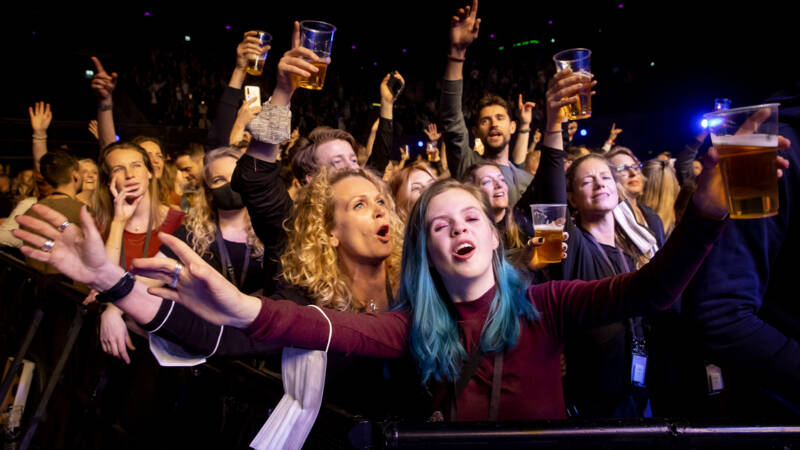
A couple of weeks ago Christopher and myself traded comments on one of his posts about the UK’s COVID-19 vaccine rollout, and he touched upon the question of what the post pandemic world might look like.
Going Dutch
This led me to thinking about the Dutch government’s approach to preparing the country for opening up and new forms of lifestyle for the near future, that they say is based on decisions that are founded in scientific research. And they are conducting a series of experiments that I thought our readers might be interested in.
In order to discover how COVID might spread if life went back to the good old days of conferences, concerts, football matches and festivals, the government is running a series of experimental events:
- 20 February: Business conference with cabaret show (500 guests)
- 21 February: Football match NEC-De Graafschap (1500 guests)
- 28 February: Football match Almere City FC-Cambuur Leeuwarden (1500 guests)
- 6 March: dance event in Ziggo Dome (1300 guests)
- 7 March: concert in Ziggo Dome (1300 guests)
- 13 March: dancefestival (outside) at Walibi Holland (1500 guests)
- 14 March: popfestival (buiten) at Walibi Holland (1500 guests)
Tickets for the first football matches didn’t sell out, but the rest went like the proverbial hot-cakes. Guests have to have a COVID test before they are allowed in, submit to tests during the event (temperature etc) and have tests after the event. Positive tests result in no admittance.
Bubbles
Inside the venues the visitors are put into bubbles. The dance event (see the photo above) involved dividing the guests into 5 groups of 250 and one group of 50. Each had its own entrance and exit, and all the necessary facilities. Each bubble had its own rules, for example one group of 250 placed in the seated area had to remain seated, while another replica group was allowed to dance in their places. Other bubbles were on the dance floor. In one, guests were asked to keep 1.5 mtrs apart, in another each had their own dance space marked on the floor. Fluorescent Water was distributed (presumably so that guests could see if they had been sneezed on).
Guests were also asked to wear sensors so that their interactions with other guests could be monitored.
What did they investigate?
- Behaviour (following the rules)
- Triage, track and trace systems
- Quick-test (15-minute result tests) as a strategy
- Air quality
- Movement dynamics
- Personal rule effectiveness (1.5 mtr distance)
- Surface hygiene
- High risk groups
Those lucky enough to get a ticket heard Sunnery James & Ryan Marciano, Sam Feldt, Lucas & Steve and Lady Bee!
The dance festival had to be cancelled due to high winds, but preparations are in full swing for the pop festival. There have only been a few words said about any results, but it appears that nobody became infected as a result of the first event, so maybe a model of this sort might be possible, everyone has a test before entering, then follows a protocol as yet to be defined.
As someone who had his honeymoon at Glastonbury Festival in the UK (and went to PinkPop last year), I very much hope and look forward to trying out the new approach, whatever that might be.

